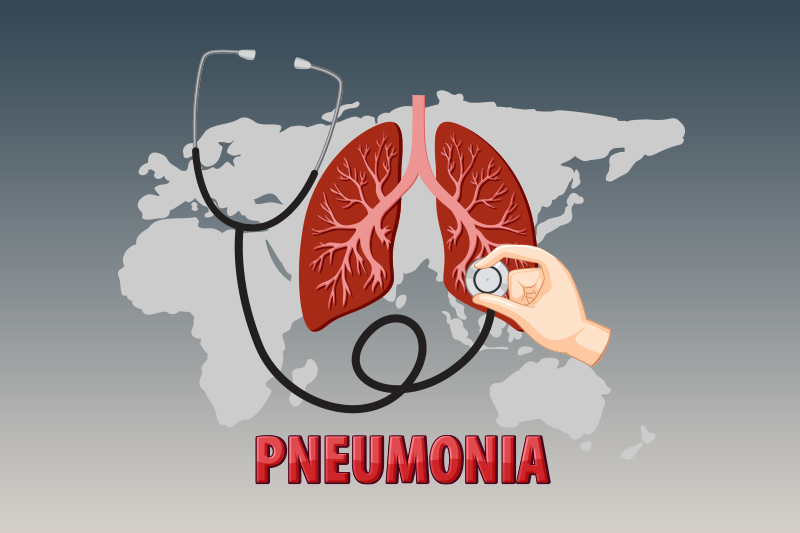Pneumonia is a common lung infection caused by bacteria, viruses, and fungi. The condition can cause a fever and cough with yellow, green or bloody mucus and make it difficult to breathe. The lungs become congested with fluid or pus, resulting in cough, fever, or chills and breathing problems. The flu, COVID-19 and pneumococcal disease are common causes of pneumonia. According to the Centers for Disease Prevention and Control, pneumonia led to 1.4 million U.S. emergency department visits in 2021 and caused 41,108 deaths in 2022. A variety of tests and procedures are used to assess lung health, diagnose pneumonia, and identify the cause of the infection. Accurate medical coding and billing services play a crucial role in ensuring proper reimbursement for pneumonia-related treatments, helping healthcare providers manage claims efficiently and reduce revenue loss.
Need expert medical billing and coding services?
Diagnosing Pneumonia
Pneumonia is sometimes hard to diagnose because the symptoms are similar to a cold or flu. A chest X-ray is commonly used to detect lung inflammation, while blood tests like a complete blood count (CBC) check for signs of infection. Pulse oximetry measures blood oxygen levels, as pneumonia can affect oxygen intake.
For more severe cases or hospitalized patients, additional tests may be necessary. An arterial blood gas test assesses oxygen levels directly from the blood, and a sputum test helps identify the germ responsible for pneumonia. A blood culture checks whether a bacterial infection has spread to the bloodstream, while a PCR test rapidly detects bacterial or viral DNA.
Advanced imaging, such as a chest CT scan, provides a detailed view of lung involvement and potential complications. In some cases, a bronchoscopy may be performed to examine the airways and collect lung samples. If fluid accumulates around the lungs, a pleural fluid culture using thoracentesis can help determine the cause of the infection.
These diagnostic tools allow healthcare providers to accurately identify pneumonia and tailor treatment accordingly.
Once the condition is diagnosed, providers need to assign the specific ICD-10 code for pneumonia to ensure accurate medical documentation and billing. Proper coding is essential for reimbursement, tracking disease trends, and facilitating appropriate patient care.
ICD-10 Codes for Pneumonia
J12 Viral pneumonia, not elsewhere classified – Billable Codes
J12.0 Adenoviral pneumonia
J12.1 Respiratory syncytial virus pneumonia
J12.2 Parainfluenza virus pneumonia
J12.3 Human metapneumovirus pneumonia
J12.8 Other viral pneumonia
J12.81 Pneumonia due to SARS-associated coronavirus
J12.82 Pneumonia due to coronavirus disease 2019
J12.89 Other viral pneumonia
J12.9 Viral pneumonia, unspecified
J13 Pneumonia due to Streptococcus pneumoniae
Bronchopneumonia due to S. pneumoniae
Code also, if applicable, any associated condition such as: abscess (J85.1)
aspiration pneumonia (J69.-)
Code first if applicable, associated influenza (J09.X1, J10.0-, J11.0-)
J14 Pneumonia due to Hemophilus influenza
Bronchopneumonia due to H. influenzae
Code also, if applicable, any associated condition such as:
abscess (J85.1), aspiration pneumonia (J69.-)
Code first if applicable, associated influenza (J09.X1, J10.0-, J11.0-)
J15 Bacterial pneumonia, not elsewhere classified Billable Codes
J15.0 Pneumonia due to Klebsiellapneumoniae
J15.1 Pneumonia due to Pseudomonas
J15.2 Pneumonia due to staphylococcus
J15.20 …… unspecified
J15.21 Pneumonia due to staphylococcus aureus
J15.211 Pneumonia due to Methicillin susceptible Staphylococcus aureus
J15.212 Pneumonia due to Methicillin resistant Staphylococcus aureus
J15.29 Pneumonia due to other staphylococcus
J15.3 Pneumonia due to streptococcus, group B
J15.4 Pneumonia due to other streptococci
J15.5 Pneumonia due to Escherichia coli
J15.6 Pneumonia due to other Gram-negative bacteria
J15.7 Pneumonia due to Mycoplasma pneumoniae
J15.8 Pneumonia due to other specified bacteria
J15.9 Unspecified bacterial pneumonia
J16 Pneumonia due to other infectious organisms, not elsewhere classified Billable Codes
J16.0 Chlamydial pneumonia
J16.8 Pneumonia due to other specified infectious organisms
Code also, if applicable, any associated condition such as: abscess (J85.1) aspiration pneumonia (J69.-). Code first, if applicable, associated influenza (J09.X1, J10.0-, J11.0-)
J17 Pneumonia in diseases classified elsewhere
Code also, if applicable, any associated condition such as: abscess (J85.1), aspiration pneumonia (J69.-). Code first underlying disease, such as: Q fever (A78), rheumatic fever (I00), schistosomiasis (B65.0-B65.9).
J18 Pneumonia, unspecified organism
J18.0 Bronchopneumonia, unspecified organism
J18.1 Lobar pneumonia, unspecified organism
J18.2 Hypostatic pneumonia, unspecified organism
J18.8 Other pneumonia, unspecified organism
J18.9 Pneumonia, unspecified organism
Code also, if applicable, any associated condition such as: aspiration pneumonia (J69.-). Code first, if applicable, associated influenza (J09.X1, J10.0-, J11.0-).
Treatment depends on the cause and severity of pneumonia. While many people who have pneumonia recover at home with medication, severe cases need to be treated in the hospital or an intensive care unit (ICU).
Significance of Comprehensive Documentation
Accurate documentation is essential for correct coding, risk adjustment, and mortality scoring. Since pneumonia has multiple types and causes, coders must ensure documentation specifies both to assign the right code. Since the organism determines the pneumonia type, accurate identification directly impacts coding, DRG assignment, risk adjustment, and mortality scores.
Pneumonia can be simple or complex, and identifying the type is crucial for proper treatment and reimbursement. Sometimes, a chest X-ray is negative, but other tests confirm pneumonia.
Pneumonia can develop in the hospital (hospital-acquired pneumonia, HAP) or outside (community-acquired pneumonia, CAP). Most CAP cases (about 85%) are caused by S. pneumoniae, H. influenzae, or M. catarrhalis. Coders and CDI specialists should query physicians to identify the causative pathogen, as this is necessary to determine the correct Diagnosis-Related Group (DRG).
As the Association of Clinical Documentation Integrity Specialists (ACDIS) notes, CDI specialists must think critically when evaluating pneumonia cases, asking key questions such as whether pneumonia is present despite a negative X-ray, if a causative organism is known, and whether it’s linked to a chronic lung condition like COPD.
Why Outsource Medical Coding and Billing
Accurate coding and billing for pneumonia can be complex due to the variety of causes, severity levels, and associated complications. Selecting the correct ICD-10 code requires a thorough understanding of clinical documentation, coding guidelines, and payer-specific requirements. Additionally, pneumonia cases often involve multiple tests, treatments, and comorbid conditions, which can lead to claim denials or reimbursement delays if not reported correctly on claims.
Medical billing and coding outsourcing to experienced professionals can help healthcare providers reduce errors, improve compliance, and streamline revenue cycle management. Expert coders evaluate the documentation carefully to identify and code pneumonia correctly. They stay updated with ICD-10 changes, payer policies, and industry regulations, ensuring accurate claim submissions and minimizing denials. By partnering with a specialized billing service, providers can focus on patient care while optimizing financial performance and reducing administrative burdens.
Ensure accurate billing and maximum reimbursement
reach out to our expert




